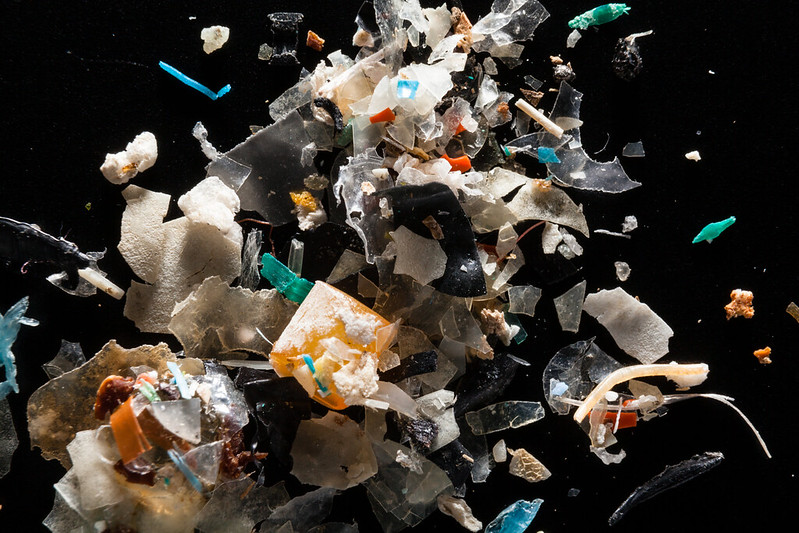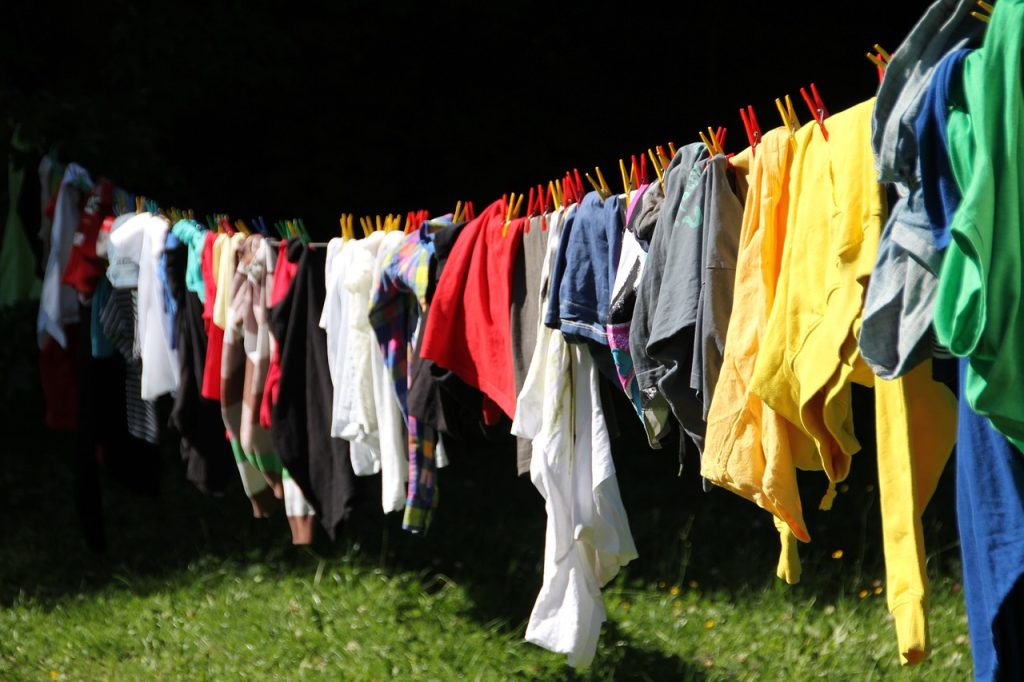When you think about plastic pollution, you probably think of water bottles, single-use plates and cutlery, or food packaging. “Oh well, I don’t litter, so I’m not responsible” you might think. But in fact, you probably do contribute to plastic pollution: every time you wash your clothes. The escape of microplastics from laundry is a substantial problem. This is another guest blog post from an IMSE work experience student, Rolando Charles!

Photo by Naja Bertolt Jensen on Unsplash
A 2017 report from the Ellen MacArthur Foundation found that in 2015 about half a million tons of microfibres were released into the ocean from laundry. Another 2017 study from the International Union for Conservation of Nature and Natural Resources found that textiles make up about 35% of global primary microplastics that end up in the oceans (PDF, 1.3MB).
A 2019 story from the United Nations Environment Program claims that about 60% of clothes are made with plastic. The reason for this abundance is that polymer-based fabrics offer many advantages over natural fibres for our wardrobes. Clothes can be made more water-resistant, breathable, and flexible, and polymer fibres can create effects like glowing-in-the-dark.
The plastics in clothing
Microplastics are pieces of plastic less than 5 mm in diameter. Over the past 20 years, they have become the subject of increasingly alarming research. Microplastics now show up in marine fauna, end up on our plate and even inside our hearts.
The nature of microplastics from laundry depends on the plastics used in textiles. The most common polymers in clothing fabrics are polyester (PET) and nylon. Acrylic and polyolefins (e.g., polyethylene and polypropylene) are also widely used. These four polymers account for approximately 98% of synthetic fibre production.

Both polyester and nylon are made from the same monomers: terephthalic acid and ethylene glycol. PET and nylon have different manufacturing processes and thus material properties. Nylon is more elastic and durable than polyester. The main compound used in acrylic fibres is acrylonitrile, which makes textiles better at trapping heat. Polyolefins make the most lightweight of all synthetic and natural fibres.
Polyester clothing takes a very long time to decompose, between 20 and 200 years (PDF, 290KB). It releases its constituent chemicals into the environment along the way. Additionally, it is made from non-renewable resources.
Avoiding microplastics from laundry
Washing our clothes damages the textile fibres on a microscopic level and they shed pieces of plastic. These are too fine for the washing machine’s filters to catch, so they go down the drain with the wastewater. These microplastics from laundry will probably end up in the environment, either via untreated wastewater discharge into rivers or the sea, or via spreading of treated sewage sludge on fields as fertilizer.

Image by Michael Püngel from Pixabay
Washing less can reduce microplastic release. But we also need multiple engineering solutions to prevent the issue at the source. Clothes manufacturers have some responsibility here, as microfibre shedding can be reduced by changing fibre length and fabric density (PDF, 4.6MB). Other actions that can help are using techniques such as coating and cutting with laser and ultrasound.
Consumers can also help by using devices to trapping microfibres in washing machines. These include Baleena, a 3D printed plastic device. This can be tossed into a washing machine to catch microplastics during the washing cycle. The developers claim that Baleena is designed to replicate the high filtration efficiency of natural sponges, but have yet to make any specific claims about its efficiency. A similar product is Cora Ball, which provides an average of 31% reduction of fibres release. However it’s more expensive than Baleena. Another alternative is Guppyfriend’s Washing Bag, which works exactly as the name implies and reduces fibre shedding and filters microplastics by an impressive 54% during the washing process.
Implementation and plausibility
These consumer solutions are all a great starting point to reducing microplastics from laundry. However, to make a difference at scale, a large number of people must use these devices for all their washes. How can we guarantee widespread use? At the moment, these companies are relying on people’s consciences and good marketing.
Alternatively, these solutions could partner with washing machine manufacturers, to provide consumers with the devices as soon as they buy a machine. This is already a reality in France. Here, legislation passed in 2020 requires all new washing machines, as of January 2025, to have microplastic filters. This might also happen in the UK, where legislation is still pending, as well as some US states, Australia and Canada.
Conclusion
You already knew that leaving water bottles around at the beach was a bad idea. You might have to think the same way about washing that new hoodie or t-shirt from your favourite affordable brand. (And this is in addition to the damage that fast fashion is doing to the environment). Would you use a microfibre-catching filter of some kind in your washing machine?